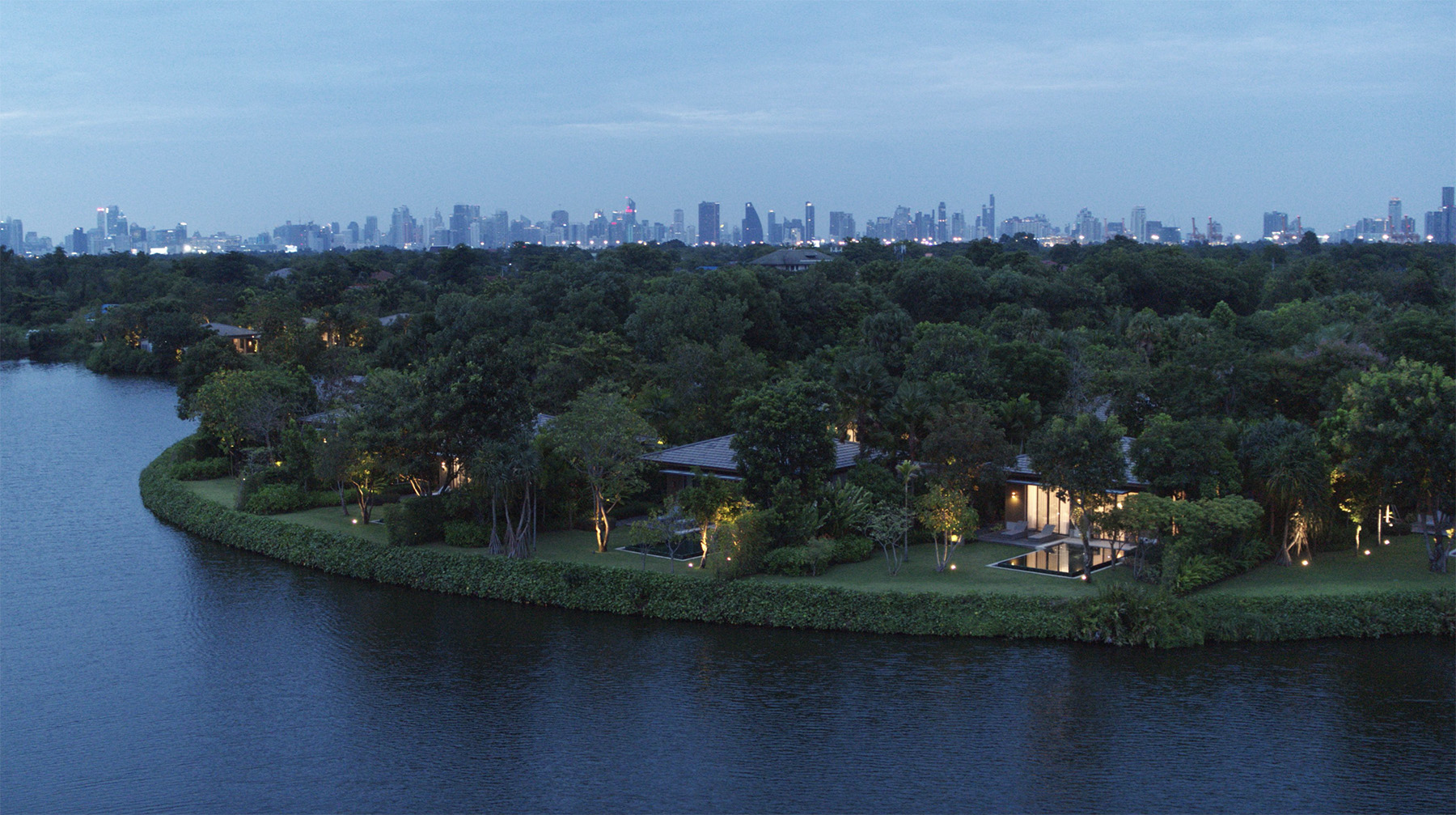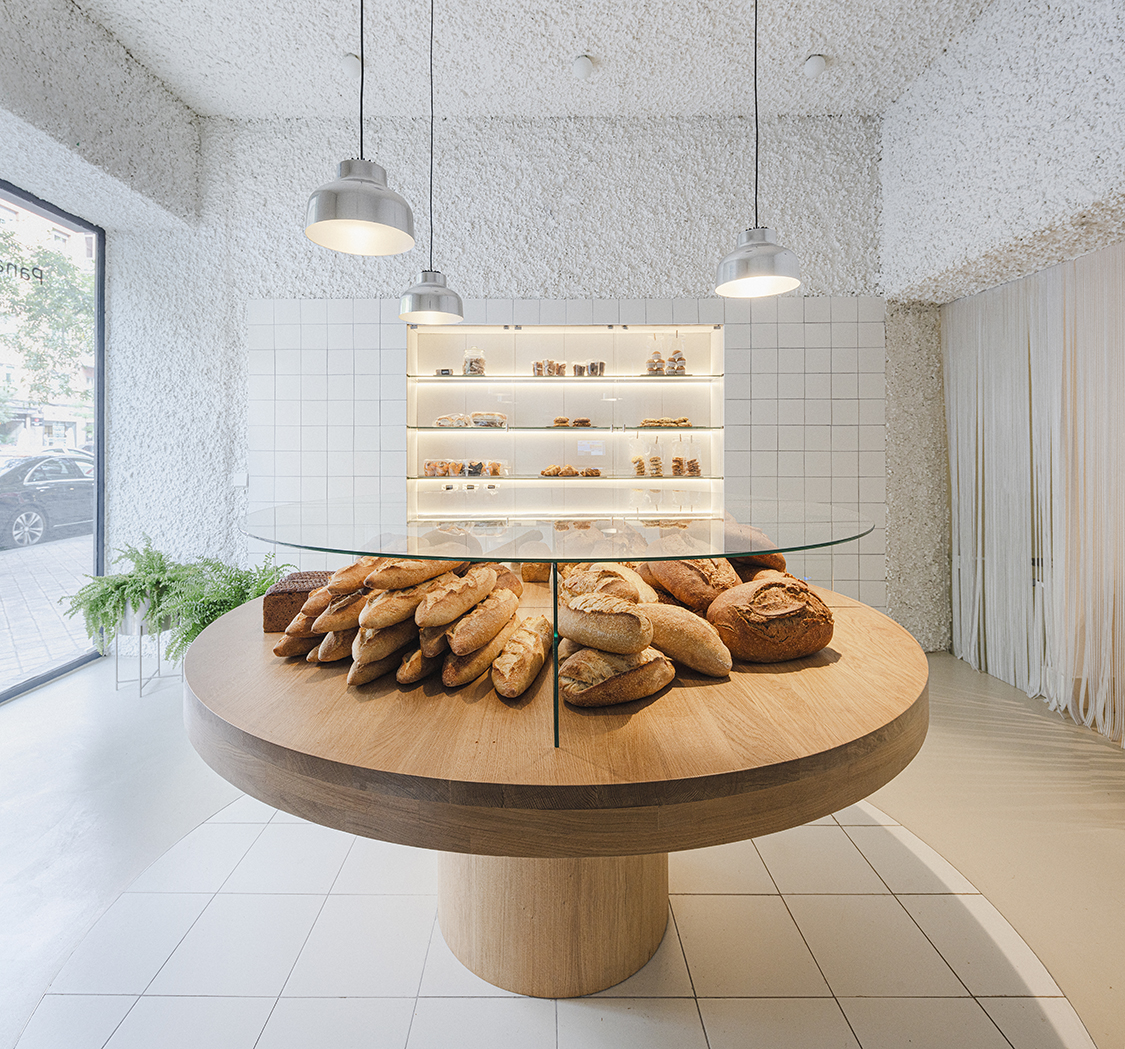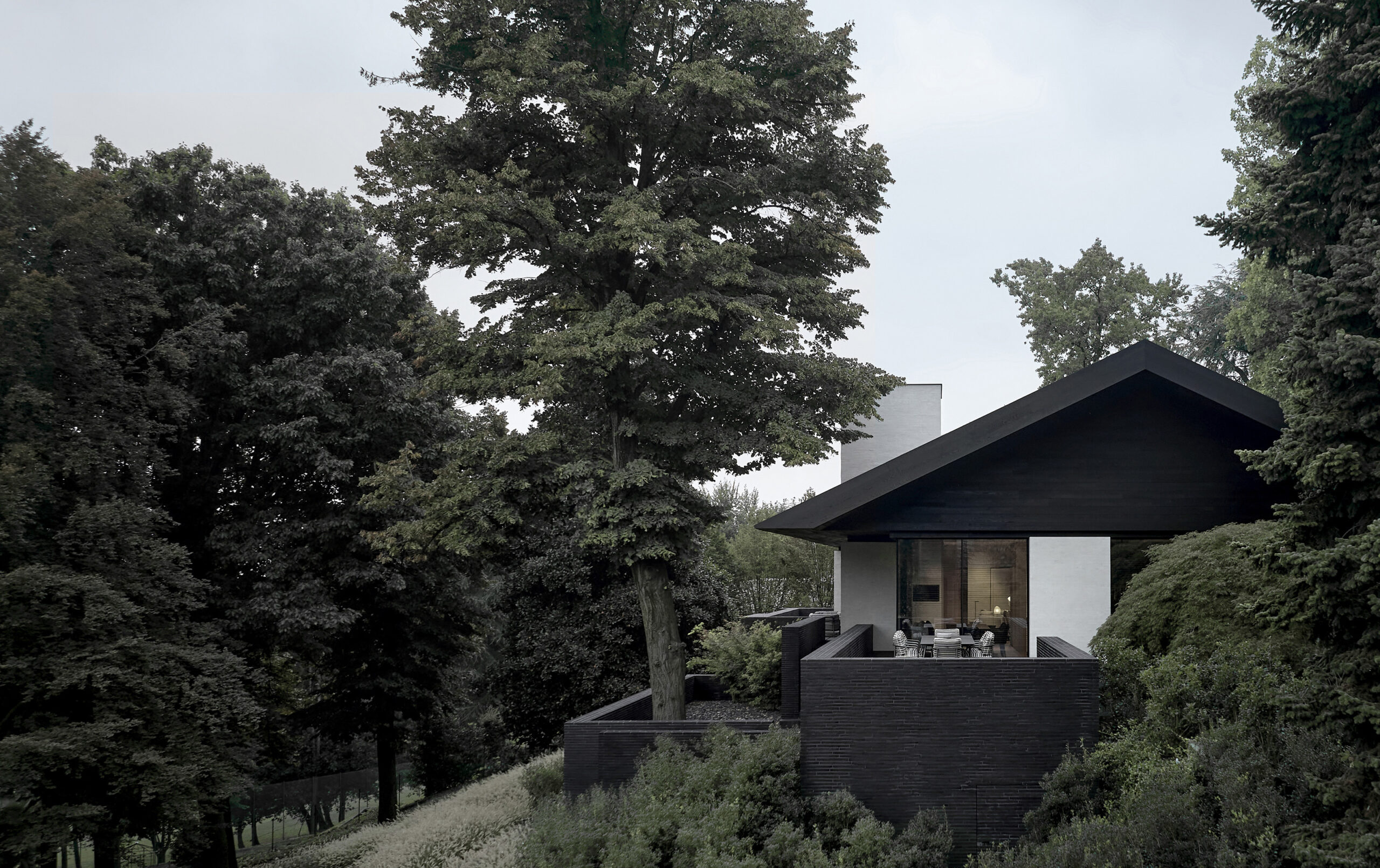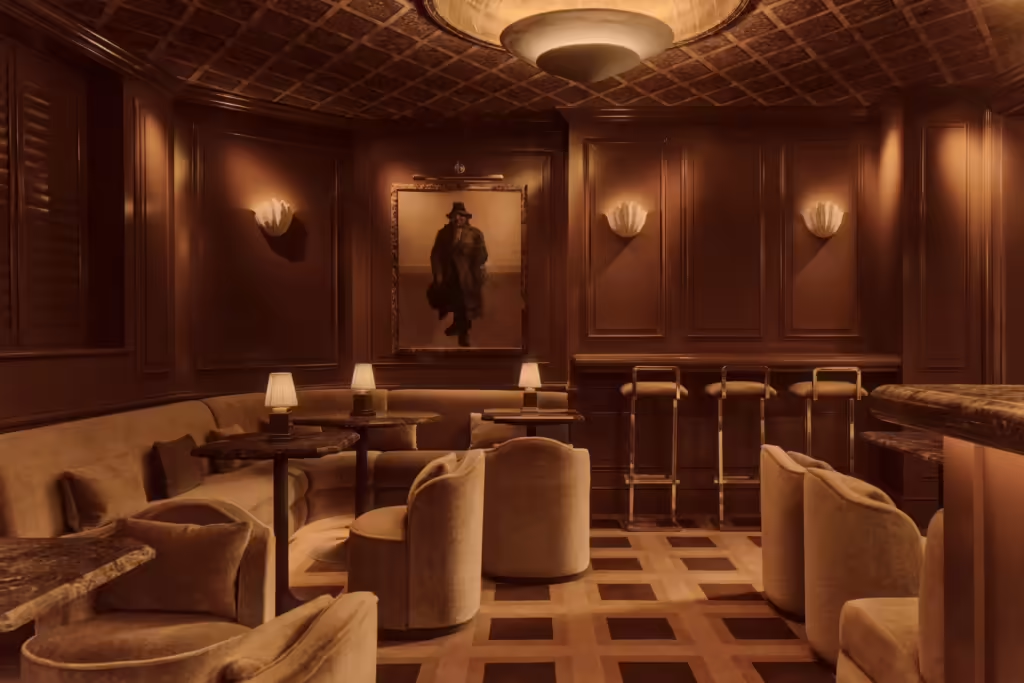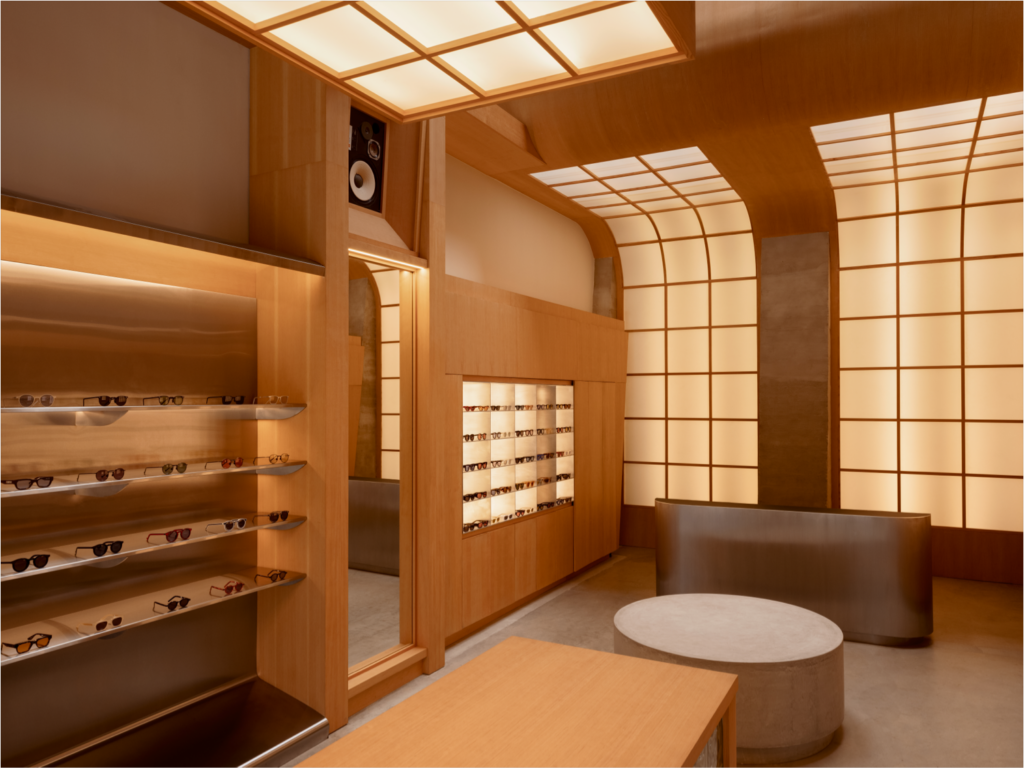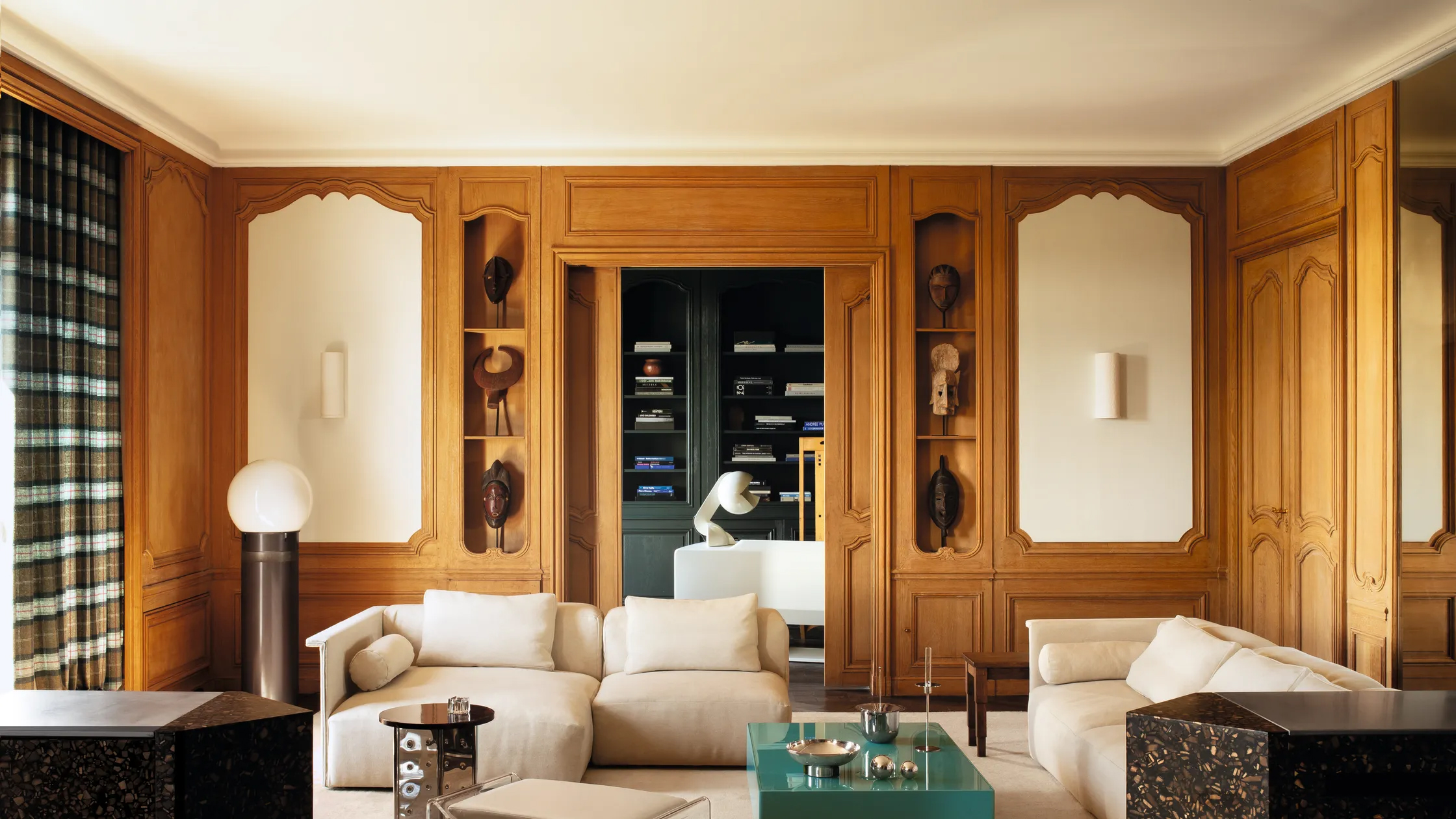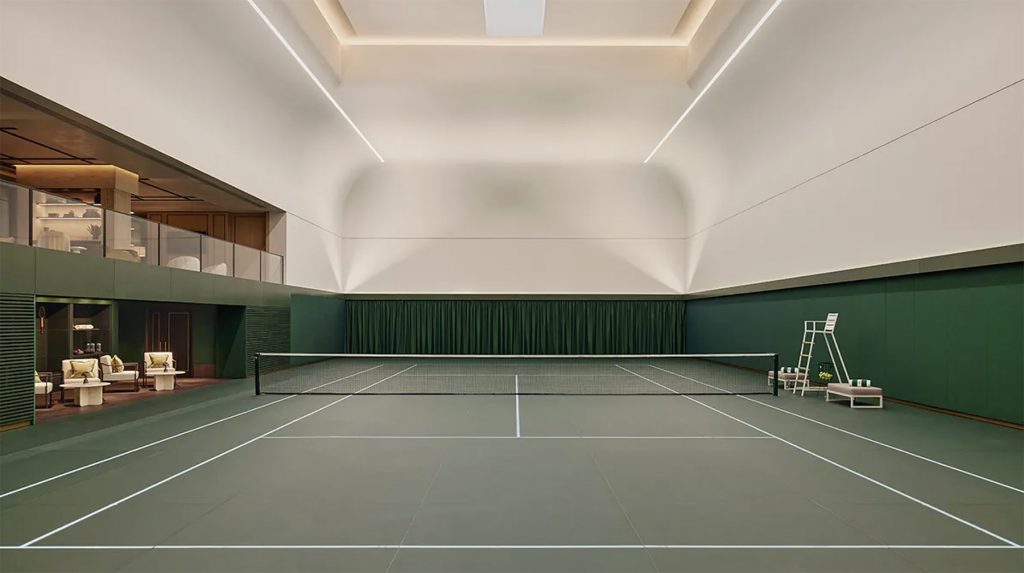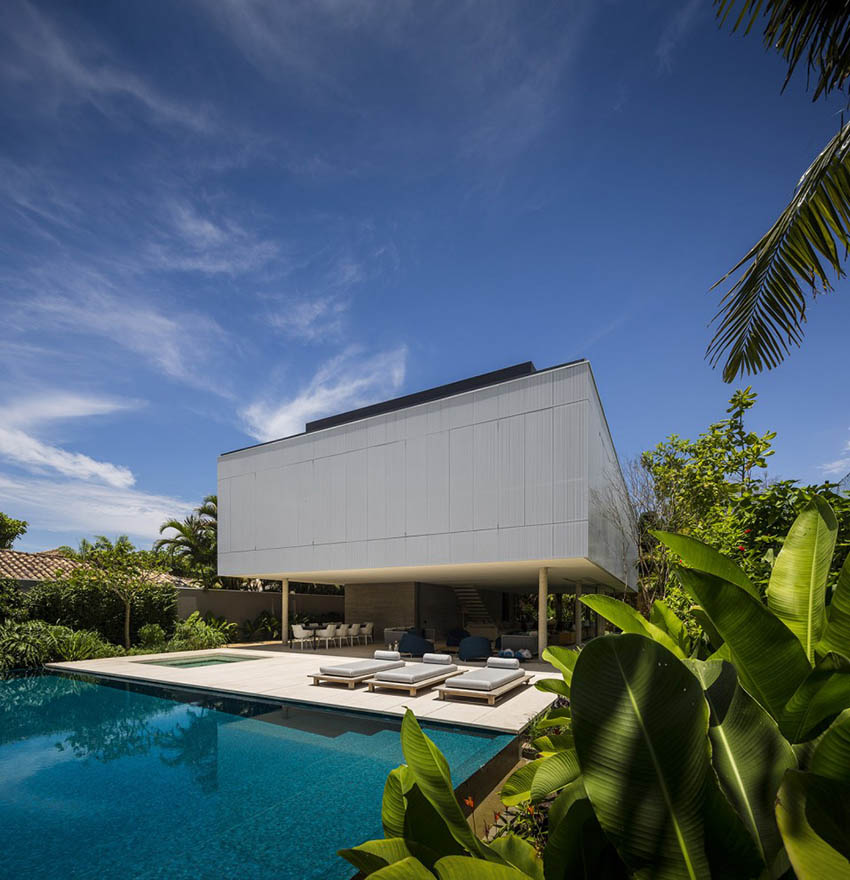
Slender supporting pilotis and horizontal slivers of concrete characterize the cube-like residential project, White House by Marcio Kogan’s StudiMK27.
The 500 square-meter (5380 sq.ft) building is an elegant example of tropical minimalism. It is constructed of durable industrial materials – concrete and white aluminum – to withstand the harsh tropical elements by the sea, yet it is deceivingly airy and weightless.
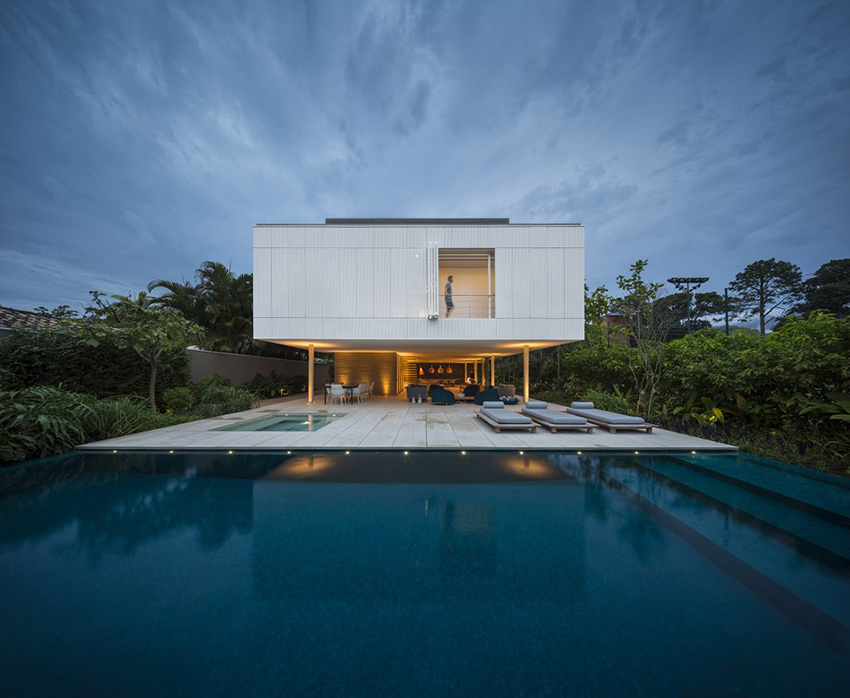
These external hallmarks link the Brazilian architect’s work with that of Lina Bo Bardi whose famous Casa de Vidro (Glass House) was completed in 1951, a year before Kogan was born.
Kogan admires Oscar Niemeyer but he has called Bo Bardi “the very best of Brazilian modernists” and he has consistently employed the very best of Bo Bardi’s favourite architectural elements.
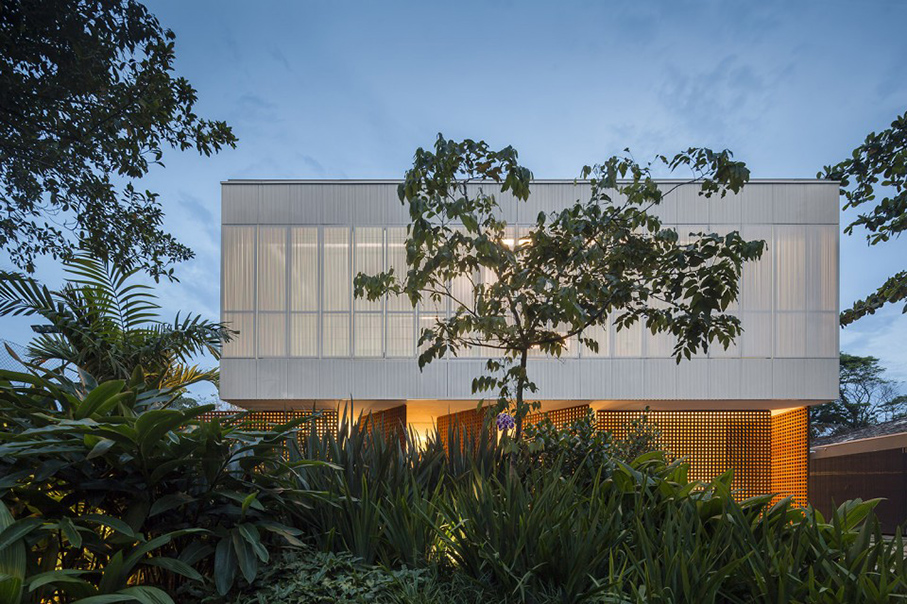
White House is a private residence in São Paulo in the São Sebastião region known for its 36 beaches on the southeast coast of Brazil.
The house itself is basically a flat box on stilts, with the ground floor dedicated to all social activity including cooking and dining. The first floor houses all of the bedrooms and on top of that is the terrace garden accessible via a round hatch door.
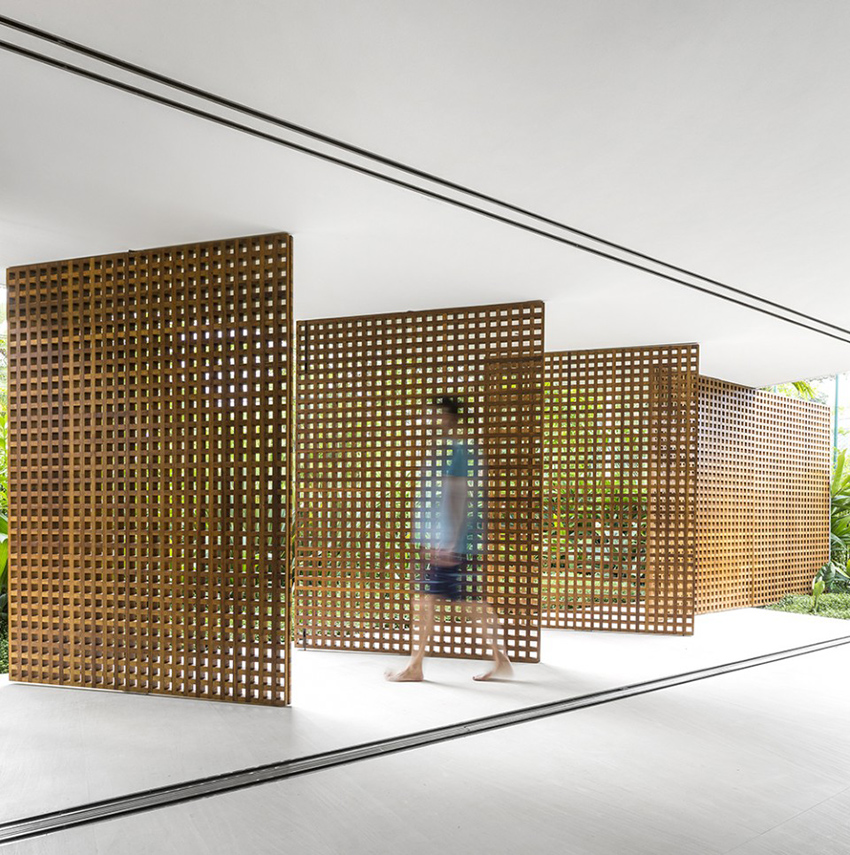
The surrounding nature is present everywhere thanks to the liberal use of glass. Several other features inside contribute to the sensation of weightlessness.
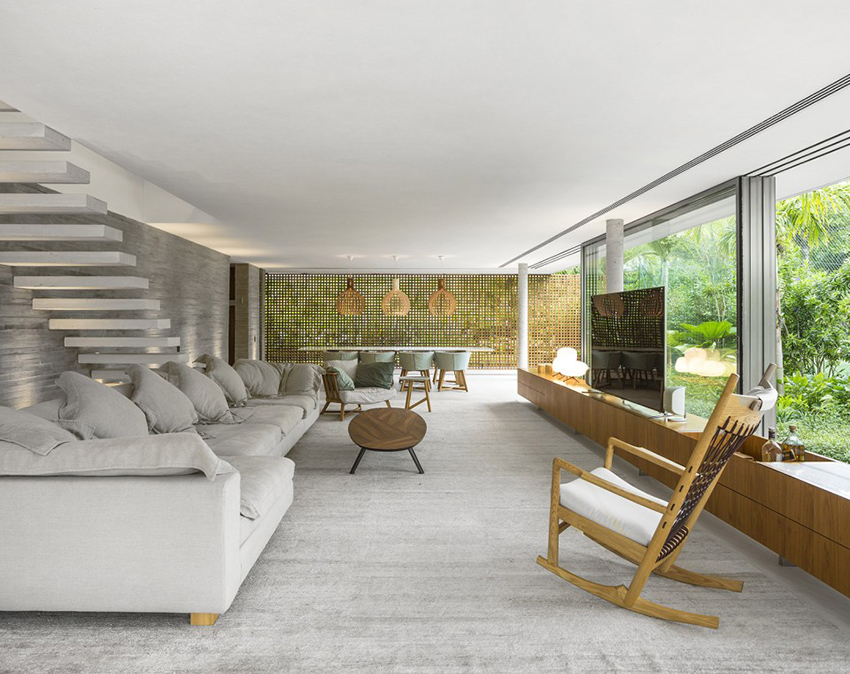
The industrial materials are softened by the use of native wood. We love the perforated partitions that evoke the muxarabi, Moorish-inspired latticework screens and one of the hallmarks of Brazilian modernism.
In this residence, the partitions allow the light to filter through while creating lovely reflection patterns on the floors and walls.
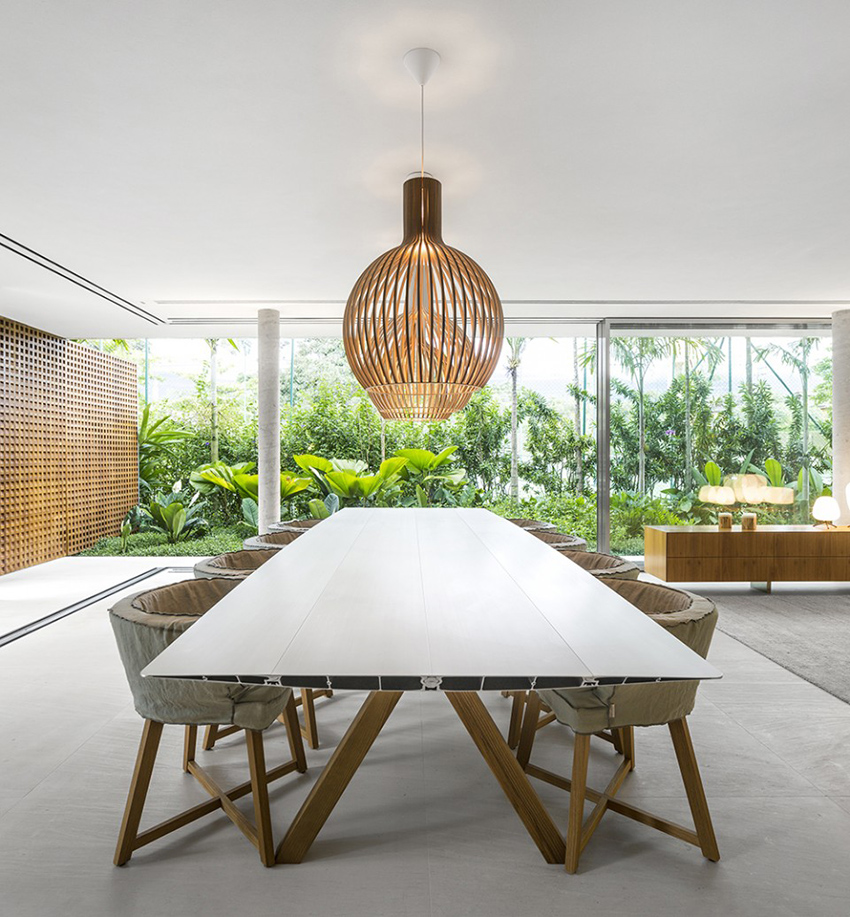
We also love the floating cantilevered staircases that support the idea of lightness with their understated presence.
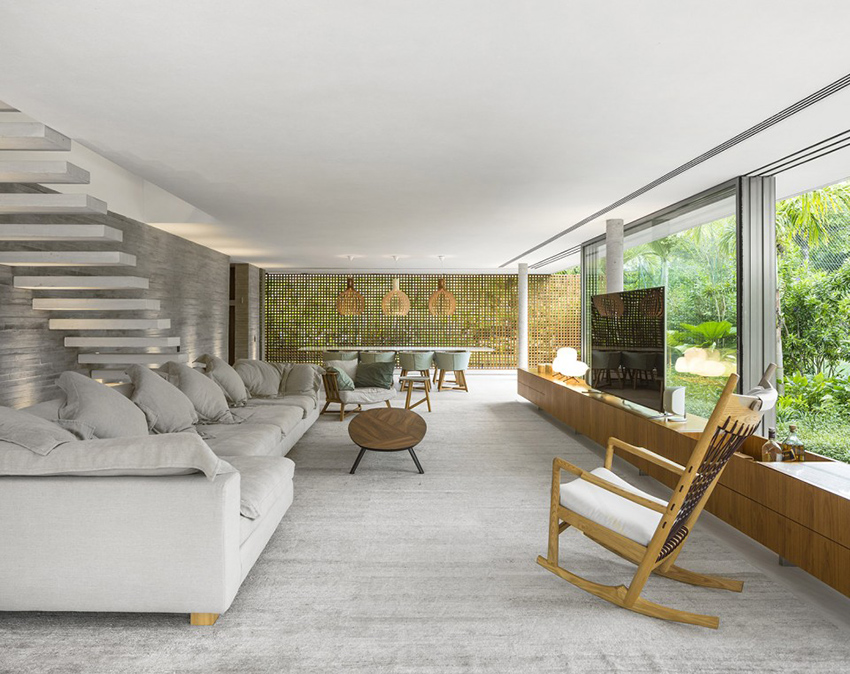
Studio MK27 created the White House with co-architect Eduardo Chalabi. The interior design is by Studio MK27 architect Diana Radomysler.
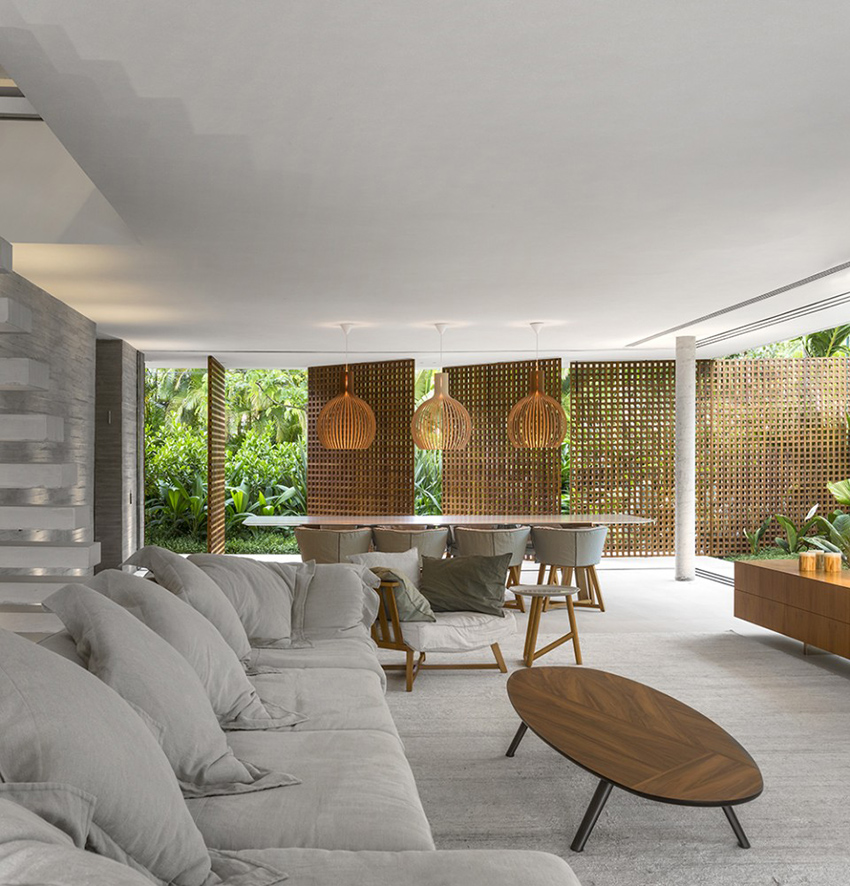
Marcio Kogan founded his Studio StudiMK27.in the early 1980s. He has since made a significant mark in the world of architecture, not just as a modernist in Brazil but globally as well. – Tuija Seipell.

Photographer: Fernando Guerra.


